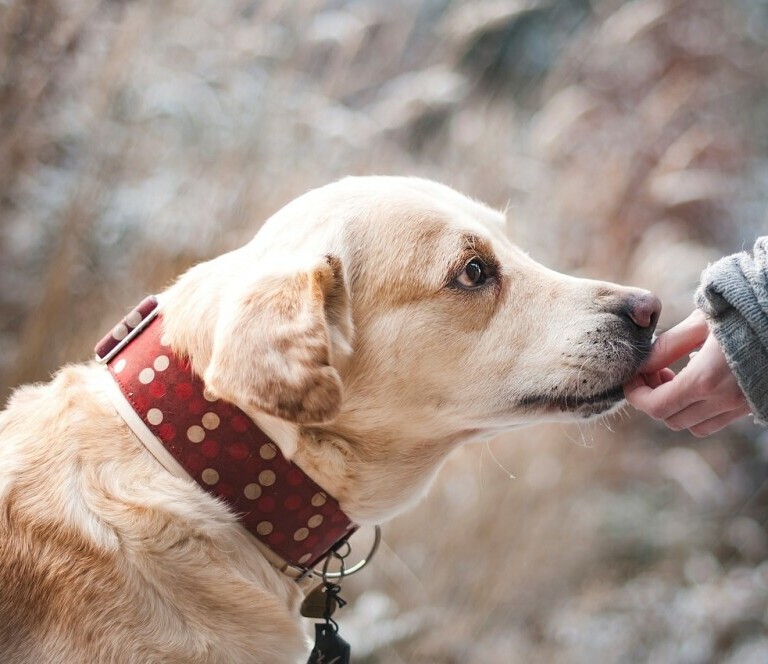
If you’re a dog owner, you’ve likely been met with those puppy eyes paired with persistent whines. We’re going to take you through why this isn’t just a minor annoyance but a form of communication for your furry friend. Dogs, like us, need to express themselves, and whining is a key part of their vocal language. So, you’re going to find out about what your dog might be trying to convey with those plaintive sounds. Let’s get into why your dog and be whining and how to get them to stop.
Now, if your dog is whining often, it’s a sign that they’re trying to tell you something. It could be a simple request for attention or something more pressing like discomfort. We’re here to help you interpret these cues. Whining can vary in frequency and intensity, and decoding this can provide insights into your dog’s well-being.
There are a host of reasons why dogs whine. Emotions play a big role in this behavior; your dog might whine out of anxiety, excitement, or even frustration. Understanding these triggers is crucial. It’s about observing the scenario surrounding the whine—is it during meal times, when you’re about to leave, or when they spot their leash? Your awareness of your pups current situation or dilemma is going to be key to helping them stop.
As we delve into the next section, remember that this isn’t just about figuring out why your dog whines but also about considering the underlying issues that might be causing these vocal expressions. Keep your ears tuned and your mind open; you’re on the path to becoming more attuned to your dog’s needs and expressions.
Looking for fresh dog food delivered? Click here.

Deciphering Whimpers: Reasons Behind Your Dog’s Vocalizations
You might often wonder why your furry companion resorts to whining. Understanding the reasons behind these vocalizations can be quite eye-opening and can significantly improve your ability to respond effectively. Let’s run through the most common reasons dogs start to become vocal.
Let’s start with the basics: physical needs. Much like a baby’s cry, your dog’s whine might indicate hunger, thirst, or the need for a bathroom break. These are direct communications of their immediate needs, and addressing them promptly can often stop the whining in its tracks. Does your dog have enough water in their bowl? Are they used to eating at a certain time and maybe you forgot to feed them? Has it been a long time since they went outside? Making sure your dogs basic needs are met on a daily basis should be the first thing to look at if your dog has begun to whine.
Now, what about emotional distress? Dogs are social creatures, and they crave interaction. When left alone or without sufficient attention, some will whine out of separation anxiety or simply because they’re seeking interaction. Others may use a soft whine as a gentle plea for your attention, almost like saying, ‘Hey, don’t forget about me over here!’ So if your dog hasn’t received any attention for a long period of time, show it some love so that it knows it’s cared for.
It’s also critical to consider underlying health issues, as dogs might whine when they’re in pain or discomfort. A whine can sometimes be the only outward sign of internal distress, so it’s essential to be observant for any accompanying signs such as decreased activity or changes in appetite. It’s possible they may be trying to alert you of its pain.
Don’t overlook environmental factors either. A new pet in the home, moving houses, or even changes in the daily routine can all lead to an uptick in whining. Dogs love predictability, and when their world changes, they might express their uncertainty and stress vocally. If your pup has new circumstances around it, you may need to offer them affection and reassurance.
With these insights, you can start to piece together what your dog might be trying to communicate. This isn’t just about stopping the whining; it’s about understanding your dog’s needs and emotions. Of course, once you know why your dog is whining, the logical next step is to learn how to help them stop. That’s going to include specific strategies and solutions, and we’re here to walk you through that in the upcoming section.

Silencing the Whimpers: Solutions to Stop Your Dog’s Whining
Attempting to quiet a whining dog can be challenging, but we’re going to lay out some practical approaches that have proven successful. Let’s tackle this together, step by step.
First up, addressing your dog’s basic needs is crucial. Hunger, thirst, or the need for a bathroom break can all cause your furry friend to whine. Ensure that you’re providing regular meals, access to water, and frequent trips outside. This proactive approach can nip whining in the bud before it starts.
Now, for the attention-seekers: Training can do wonders. If your dog whines to demand attention, it’s going to be about consistency. Ignoring the whining and rewarding quiet behavior is key. Positive reinforcement, like treats or praise when they are quiet, can encourage silence.
You’re definitely going to want to build a stress-free environment. That includes comfy resting spaces, toys for self-entertainment, and possibly even background music to soothe them when you’re away. Dogs thrive in calm, predictable settings.
There will be times when professional insight is needed. If the whining persists despite your best efforts, it’s a good idea to consult with a vet or a dog behaviorist. They can provide tailored advice and rule out any underlying health issues.
Remember, helping your dog stop whining is not just about quieting an annoyance. It’s about understanding and fulfilling your dog’s needs to ensure a happy and healthy life. The more you pay attention to your dogs needs and make sure they are in a comfortable and loving situation, the less they will feel the need to whine.

In Closing: Harmonizing Your Bond for a Contented Canine Companion
Reflecting on the strategies we’ve discussed, it’s important to recognize the sheer power of patience and consistent effort when dealing with your dog’s whining behavior. Understanding the root causes—and applying the targeted solutions—not only quiets the noise but also strengthens the bond between you and your pet.
As you celebrate each small victory over whining, you’ll notice a world of difference in your dog’s demeanor and your shared environment. Tackling the issue isn’t an overnight feat; it’s a journey of mutual learning and adaptation. So, remember, a bit of grace goes a long way.
Dealing with whine-triggering issues also involves a fair share of love and respect. Acknowledge your dog’s feelings and needs as genuine, and always approach their concerns with empathy. Even if the progress seems slow, your unwavering support is what your dog values most.
Lastly, we really hope that you see the value in continuing to educate yourself on canine behavior. Your dog’s whining might be a symptom of an issue you’ve not yet discovered or an emotional need that’s going unmet. Remaining curious and informed about your dog’s well-being ensures that the both of you can lead happier, healthier lives together.
Looking for fresh dog food delivered? Click here.

